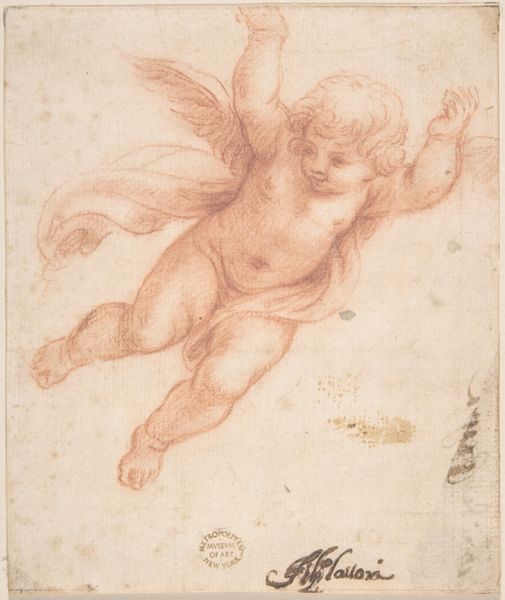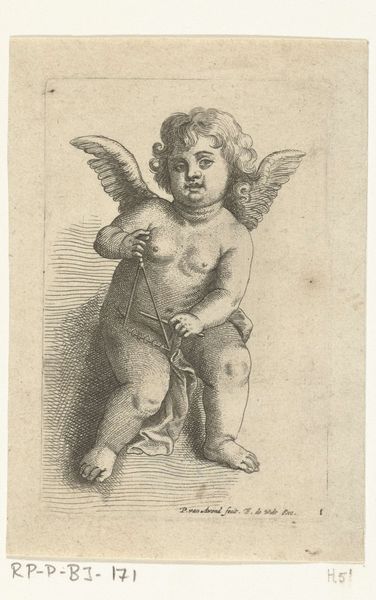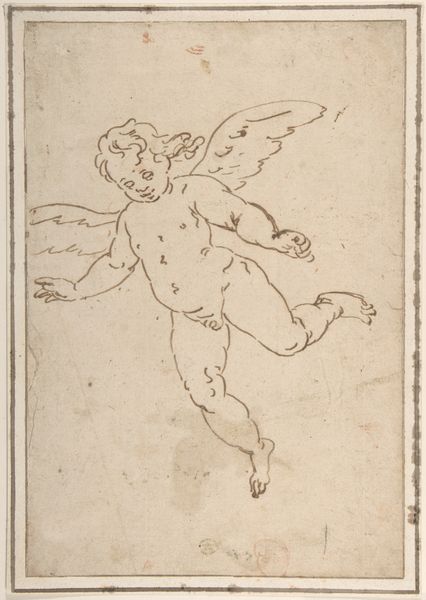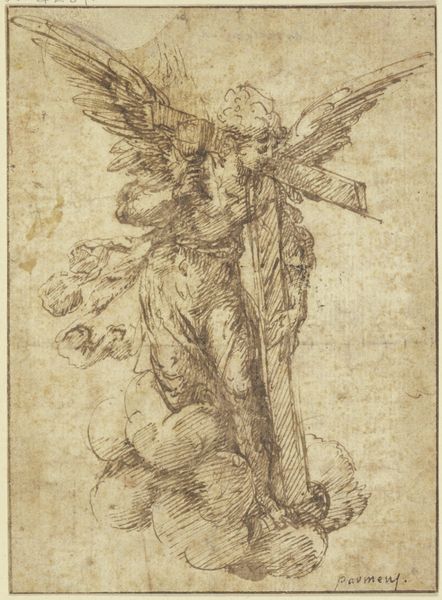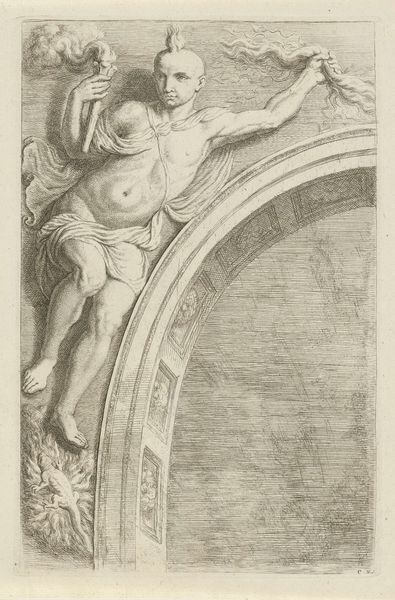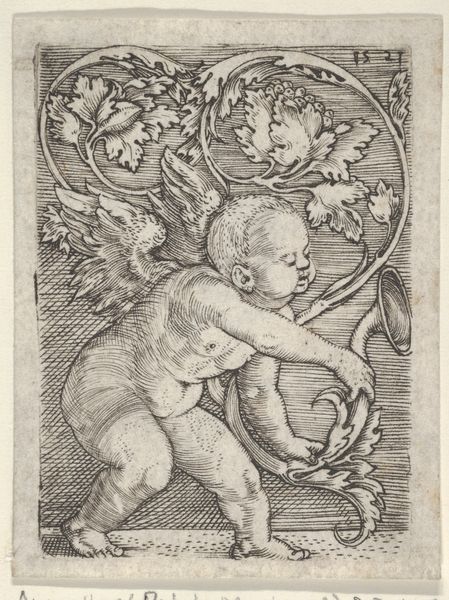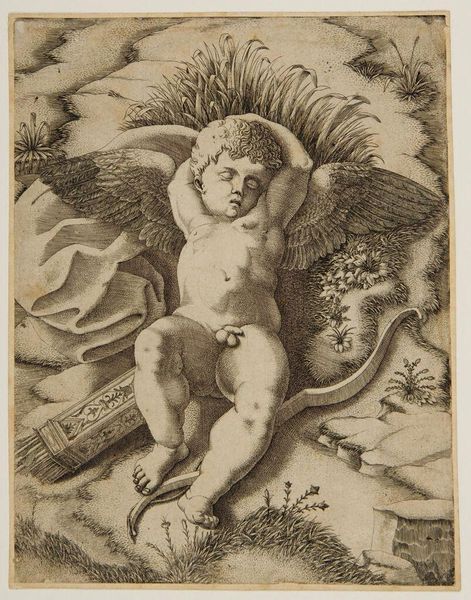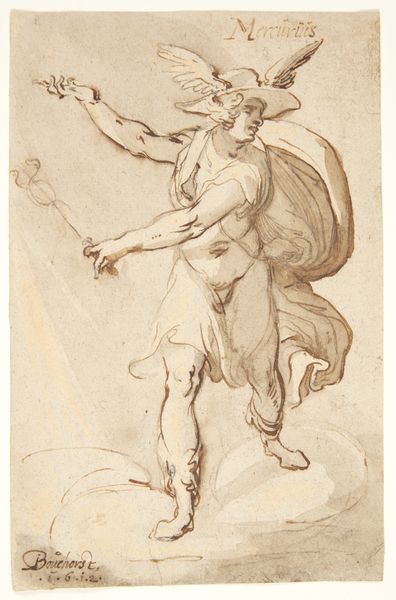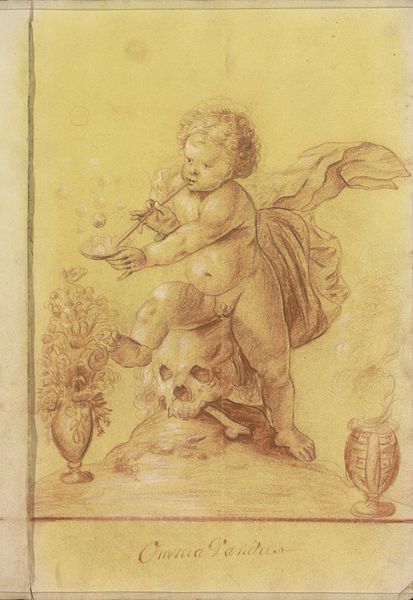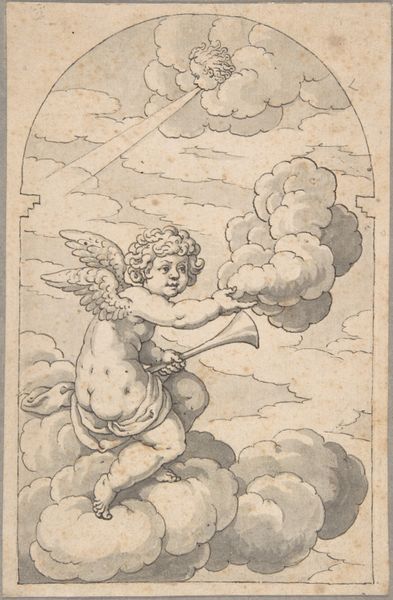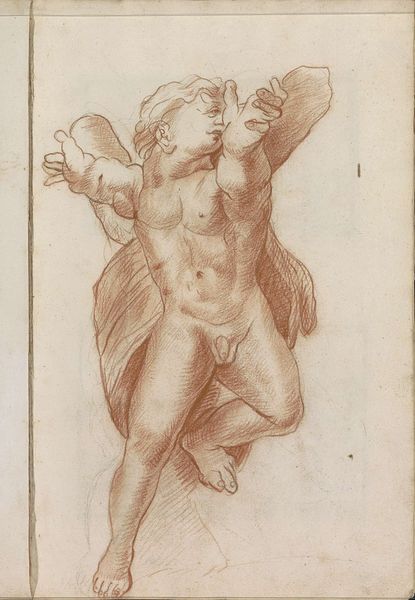
drawing, pencil
#
drawing
#
allegory
#
baroque
#
figuration
#
pencil drawing
#
pencil
Dimensions: height 58 mm, width 46 mm
Copyright: Rijks Museum: Open Domain
Curator: Here we have Pieter Jansz.’s "Deel van een cartouche met een putto," a pencil drawing created sometime between 1630 and 1672. Editor: It's deceptively simple at first glance, this cherubic figure holding what seems to be part of an ornamental frame, yet it radiates such a potent sense of baroque drama. The dynamism is immediately striking. Curator: Absolutely, it’s dynamism born of deep symbolic roots. The putto, of course, represents divine love, but also innocence, particularly in a funerary context. Editor: Do you read a hint of mourning, a subversion, of the child-angel figure there, in that ornamental frame? Perhaps commenting on rigid artistic tradition as much as commemorating grief or love? Curator: A partial cartouche certainly makes me think about fragments—ruptured wholeness. Consider its relationship to cartouches as declarations or royal proclamations: it suggests authority, yet it is incomplete. Editor: Indeed. That baroque frame appears weighty. Even as a sketch, you can imagine it dominating its space in any larger work. I read the putto, then, as actively supporting that burden. What’s interesting is that it humanizes power; the suggestion that, literally and figuratively, a 'divine' figure shores up the structure, while its chubby form has nothing divine about it, more working-class. Curator: Or consider that love, that childlike innocence, as an underrecognized support of worldly power. Editor: That does shift things... The image plays on so many contrasts, lightness versus heaviness, fragment versus whole, power versus innocence. It invites us to destabilize the familiar and see beyond accepted visual grammar. Curator: Which may be why it retains its force. Editor: A powerful testament to the fact that we actively constitute the symbolic power of images and that images are constantly evolving beyond the intentions of any given person. The picture doesn't belong to itself!
Comments
No comments
Be the first to comment and join the conversation on the ultimate creative platform.
